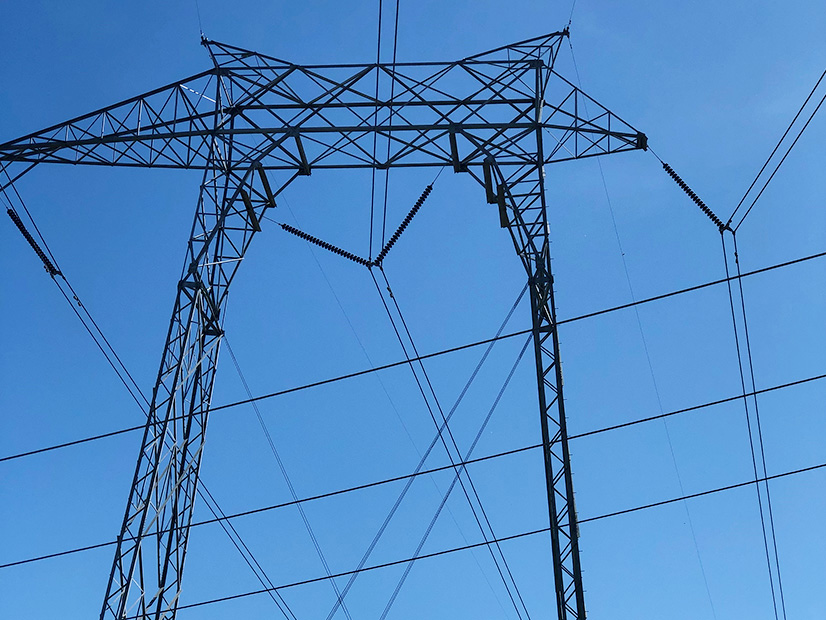Forest fires in Québec forced the shutdown of a Hydro-Québec transmission line during New England’s peak-demand evening hours Wednesday, leading to a capacity deficiency and requiring ISO-NE to take emergency actions to balance the grid.
The event marks just the third capacity deficiency event in New England since 2016; the most recent prior incident was on Dec. 24, 2022. ISO-NE was able to draw on operating reserves to avoid major issues.
“The transmission outage occurring in the midst of the evening peak meant that sufficient resources were not able to respond quickly enough to avoid the capacity deficiency,” ISO-NE wrote in a press release, noting that the transmission issue coincided with higher-than-expected peak evening demand.
While calling on the region’s reserve resources, ISO-NE declared an Energy Emergency Alert Level 1, the lowest of the RTO’s three alert levels. These actions helped mitigate the capacity deficiency within a half-hour, and ISO-NE did not ask the public to reduce its energy consumption.
“In and of themselves, capacity deficiencies are not always emergencies,” ISO-NE said. “They simply mean that ISO operators are taking additional actions to maintain system reliability.”
A Hydro-Québec spokesperson told RTO Insider in a statement that the transmission outage was the result of forest fires in the Baie-James region of Québec, which caused a temporary shutdown of the company’s Phase-2 line.
“Heat and smoke can trigger automated system protection mechanisms, which will essentially shut down the power line in order to protect it,” Hydro-Québec said. “Our bulk transmission infrastructure has not suffered any damage as a result of the forest fires. We remain in constant communication with our ISO partners, providing as much visibility as we can on the current fire situation.”
The company also highlighted the link between the accelerating consequences of manmade climate change and the massive early season wildfires in Québec.
“While forest fires are not a new phenomenon, the intensity and increased frequency of these events in North America are the result of climate change,” Hydro-Québec said. “The amplitude of this event should serve as a clear reminder that we need to accelerate every effort towards transitioning away from the burning of fossils fuels for electricity generation.”
The wildfires already have broken Canada’s record for most area burned in a single year, and government officials expect above-average fire conditions to continue through July and August in many regions of the country.
Kristina Dahl, principal climate scientist for the Climate & Energy program at the Union of Concerned Scientists, said that while a large range of factors have contributed to the massive Canadian wildfires, climate change is a major driver.
“There’s a very clear connection between climate change and worsening wildfires,” Dahl said. She noted that climate change exacerbates wildfire risks by increasing temperatures and drying out ecosystems, as well as enabling tree-killing insects to survive the winter, which creates additional fuel for wildfires.
“It’s really alarming what’s happened in Canada so far this wildfire season,” Dahl added. “Wildfires have burned over 20 million acres of land; that’s roughly an area the size of the state of Maine.”
In early June, ISO-NE reported that wildfire smoke had led to reduced solar generation across the region. It emphasized the difficulty in forecasting demand amid the effects of this smoke because of the lack of historical data. (See RTOs Report Diminished Solar Output, Loads as Wildfire Smoke Passes.)
ISO-NE also recently released the preliminary results of its joint study with the Electric Power Research Institute about the grid reliability impacts of extreme weather, looking at the summer of 2027. While the study found no energy shortfall risk, it did not analyze the risks posed by wildfires to the grid.
“We did not directly consider wildfire risks, as the assessment was focused on resource adequacy risks where wildfires would not be expected to impact enough supply resources simultaneously in the region to be a primary hazard to consider for resource adequacy risk,” Daniel Brooks, EPRI vice president of integrated grid and energy systems, said in a statement to RTO Insider. “Wildfire risks might be a contributing factor potentially during extreme heat scenarios in the future. One area we could add for future versions would be the import capability with wildfire impacting transmission from neighboring regions such as Québec.”
Susan Muller, senior energy analyst for UCS, said the reliability issues experienced last week highlight the need to rapidly transition away from fossil fuels and to recognize the reliability attributes of nonemitting resources.
For clean energy sources, “you’re getting power, but you are also reducing the likelihood of extreme weather because you’re no longer adding carbon to the atmosphere,” Muller said.


